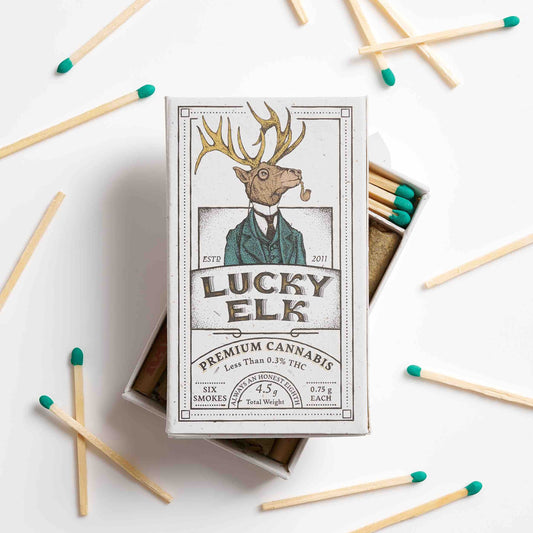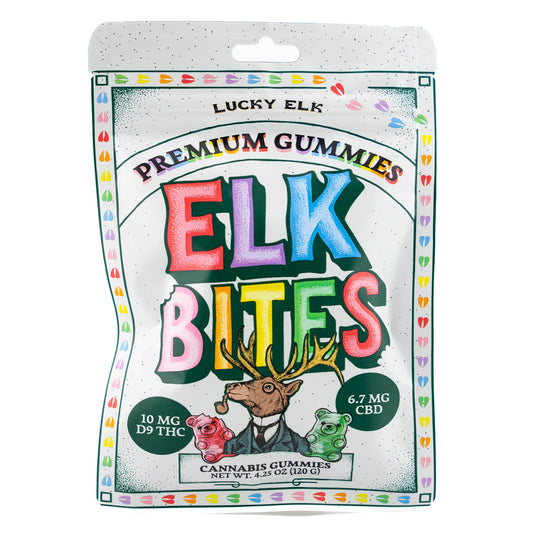As the demand for hemp products (especially THCa flower) continues to rise, farmers and cultivators are exploring various growing techniques to maximize yields, quality, and sustainability. In this blog, we'll delve into three popular hemp growing techniques: outdoor grown, greenhouse grown, and indoor grown. At the end of the blog is a guide for consumers: how to factor in the importance of growing methods when choosing hemp products.
Three Different Growing Methods:
Outdoor, Greenhouse, & Indoor
What’s the difference between Outdoor, Greenhouse, and Indoor-grown hemp flower? What are the key aspects of these growing techniques?
Outdoor Grown Hemp
Outdoor hemp cultivation is the traditional method that takes advantage of natural sunlight, fresh air, and natural soil composition. Here are some key aspects of outdoor grown hemp:
a. Sunlight: Outdoor hemp relies on the sun as the primary light source, offering full spectrum light that supports robust plant growth and optimal cannabinoid production.
b. Soil Composition: The natural soil in outdoor environments contains a diverse range of microorganisms, nutrients, and minerals, promoting healthy plant growth. Additionally, the exposure to various weather conditions can enhance the hemp plant's resilience.
c. Cost-Effectiveness: Outdoor cultivation typically requires less investment in infrastructure and equipment, making it a cost-effective option for many farmers.
d. Environmental Impact: Outdoor hemp cultivation minimizes the use of artificial lighting and climate control systems, reducing the carbon footprint and promoting a more sustainable approach to farming.
Greenhouse Grown Hemp
Greenhouse cultivation offers a middle ground between outdoor and indoor growing techniques. Here's a closer look at greenhouse grown hemp:
a. Light Control: Greenhouses provide a controlled environment where growers can regulate the amount of light reaching the plants. This allows for extended growing seasons and the ability to cultivate hemp in regions with adverse weather conditions.
b. Climate Control: Greenhouses offer climate control mechanisms, allowing growers to optimize temperature, humidity, and air circulation. This helps create favorable conditions for hemp growth, especially in regions with extreme climates.
c. Pest and Disease Management: The enclosed structure of a greenhouse provides a barrier against pests and diseases, reducing the need for chemical interventions. Additionally, it enables growers to implement integrated pest management strategies effectively.
d. Quality Control: With controlled environmental factors, greenhouse-grown hemp often exhibits consistent quality, cannabinoid profiles, and terpene content.

Outdoor/Sungrown Hemp |

Indoor Grown Hemp |

Greenhouse/Light Assist Hemp |
Indoor Grown Hemp
Indoor hemp cultivation involves growing hemp plants in fully controlled environments, typically within a building or a dedicated facility. Let's explore the characteristics of indoor grown hemp:
a. Total Environmental Control: Indoor cultivation allows precise control over all environmental factors, including temperature, humidity, light intensity, and photoperiod. This enables growers to create tailored conditions optimized for hemp growth and maximize cannabinoid production.
b. Year-Round Cultivation: Indoor hemp cultivation breaks the barriers of seasonality, enabling growers to cultivate hemp year-round. This consistent production can help meet market demands and establish reliable supply chains.
c. Higher Cannabinoid Concentrations: The controlled environment of indoor cultivation can result in higher cannabinoid concentrations and consistent cannabinoid profiles, appealing to consumers seeking specific cannabinoid ratios or targeted therapeutic effects.
d. Energy Consumption: Indoor cultivation requires artificial lighting and climate control systems, leading to higher energy consumption compared to outdoor or greenhouse methods. However, advancements in energy-efficient technologies are reducing the environmental impact of indoor cultivation.
When it comes to growing hemp, farmers have the flexibility to choose between outdoor, greenhouse, or indoor techniques. Each method offers unique advantages and considerations based on factors such as climate, location, market demands, and available resources. Outdoor cultivation harnesses the power of nature, greenhouse cultivation provides a controlled yet natural environment, and indoor cultivation offers complete control over growing conditions.
A Consumer’s Guide to Outdoor, Greenhouse, & Indoor Grown Hemp
With so many choices available to hemp consumers, how do you factor in the importance of different growing techniques? How do these methods affect the overall quality of the product?
Hemp Extract Products: Outdoor Grown is Best
When it comes to extract-based products, like tinctures, topicals, and edibles, then outdoor grown hemp is probably the best choice. These products are crafted in a lab, where the CBD and terpene content can be fine tuned to the exact specifications desired. The original plant source doesn’t need to be the highest quality, but it should be organic and grown without pesticides or metals. These dangerous compounds can be passed from the fresh plant into the extract and eventually into you!
Because the quality of any extract-based product won’t be much affected by the growing method used, why not choose the most cost-effective and environmentally friendly way? When shopping for hemp extract products, look for hemp that was grown outdoors in a sustainable way.
Hemp Flower: Indoor is Supreme, but it Comes with a Cost
When it comes to smokable flower, indoor-grown hemp is often considered superior to other cultivation methods due to several factors that contribute to its overall quality. It does, however, come with some costs. If you’re a hemp flower connoisseur, it might be worth it.
Pros of Indoor Grown Hemp Flower:
- Controlled Environment: Indoor cultivation allows growers to have complete control over environmental factors such as temperature, humidity, lighting, and airflow. This control ensures optimal growing conditions throughout the plant's life cycle, resulting in consistent and predictable growth patterns. It also minimizes the risk of exposure to pests, diseases, and harsh weather conditions that can negatively impact the quality of the flower.
- Quality Assurance: The controlled environment of indoor cultivation enables growers to closely monitor and adjust variables, resulting in higher quality flower. Growers can provide precise nutrition, maintain ideal light intensity and spectrum, and implement advanced cultivation techniques to maximize the plant's potential. This attention to detail often translates into flower with enhanced aroma, flavor, potency, and visual appeal.
- Increased Cannabinoid and Terpene Profiles: Indoor cultivation techniques can promote higher cannabinoid and terpene concentrations in the flower. The ability to fine-tune environmental conditions allows growers to create an optimized environment that encourages the development of desirable compounds. As a result, indoor flower may exhibit more pronounced and diverse flavors, aromas, and potential effects.
- Strain Preservation: Indoor cultivation provides a controlled environment that helps maintain the genetic integrity of specific strains. By preventing cross-pollination with other varieties, indoor growers can preserve the distinct characteristics and traits of sought-after strains. This ensures consistency and allows consumers to experience the unique qualities associated with specific strains.
- Year-Round Availability: Unlike outdoor cultivation that relies on seasonal changes and climate conditions, indoor cultivation enables year-round production. This consistent supply ensures a steady availability of high-quality flower regardless of the time of year, providing consumers with reliable access to their preferred strains and products.
- Reduced Contamination Risk: Indoor cultivation minimizes the risk of contamination from external sources, such as pollutants, pesticides, or heavy metals. With a controlled environment and strict cultivation practices, growers can maintain a cleaner and safer growing environment. This is particularly important for those seeking pure and contaminant-free flower.
Cons of Indoor Grown Hemp Flower:
- Cost: Indoor cultivation is considerably more expensive because you’re paying for every watt of power that makes those plants grow. Additionally, there’s significant expense when it comes to setting up an indoor grow facility.
- Environmental impact: Energy used to grow indoor hemp plants is mostly derived from coal, contributing to higher carbon emissions. When the sun’s energy is abundant and free, it may seem strange to use a nonrenewable resource to grow hemp. At Lucky Elk, we believe that moderate use of indoor hemp flower is fine, just like driving a car or flying in an airplane, but that it probably shouldn’t be your everyday flower due to the environmental impact.

Outdoor/Sungrown Flower |

Indoor Flower |

Greenhouse Flower |
Conclusion: Outdoor and Greenhouse Hemp is Good Enough for Most
Organically grown hemp flower, cultivated at the proper latitude outdoors or in a greenhouse can be very high quality. When grown sustainably, hemp can be a very environmentally-friendly crop—even fighting climate change by acting as a carbon sink.
While indoor cultivation offers numerous advantages, it's important to note that each cultivation method has its own strengths and considerations. Factors such as personal preferences, desired effects, and sustainability practices may influence the choice between indoor, outdoor, or greenhouse-grown flower. Ultimately, the quality of the flower depends on the expertise and care of the cultivator, regardless of the cultivation method employed.
Most consumers find the best value with greenhouse and outdoor flower, but true connoisseurs will pay a premium for indoor.








